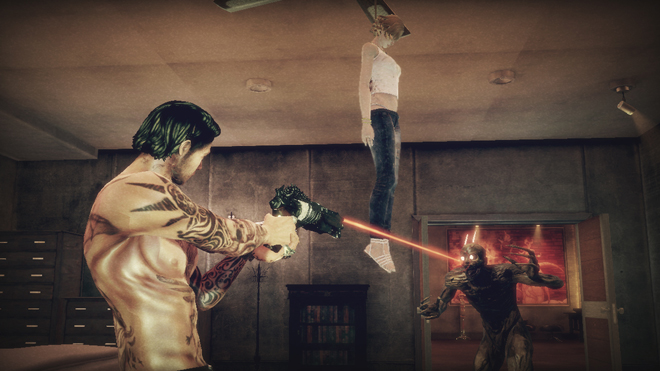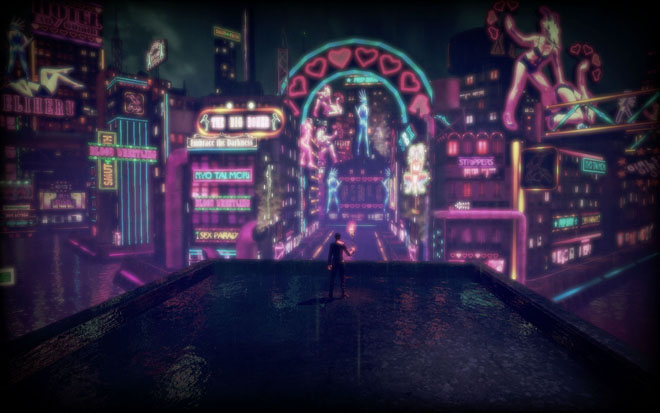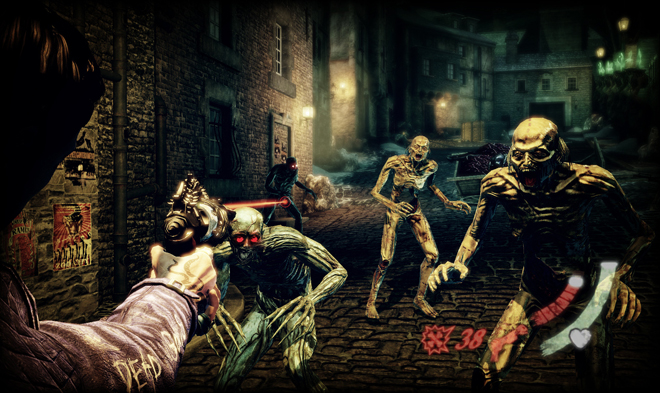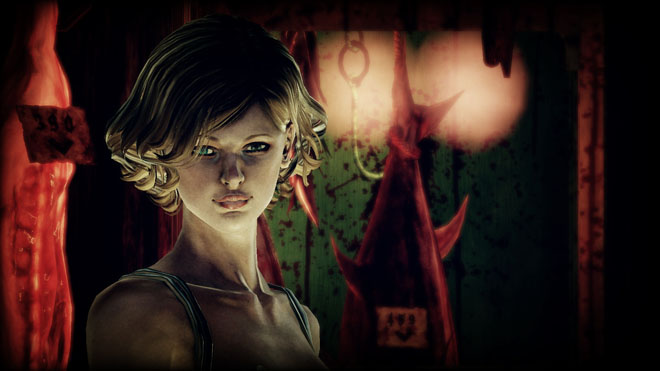Shadows of the Damned — Que Magnifico!

Shadows of the Damned wasn’t what you’d
call one of the biggest successes around. In fact, you could call it one of the
biggest commercial failures we’ve seen in a generation full of escalating
budgets. It was part of the origin of the EA Partners curse (and I mean no
irony by the use of the word “origin”), along with Alice: Madness Returns, where we
saw how EA would be marketing games that were part of this program — as in,
they wouldn’t be marketing them at all. Though some games have been mildly
popular with small audiences, none of them have really taken off.
And that’s a
shame, because SotD is a pretty well put together game, ranking among one of
the best Grasshopper Manufacture has released thus far. Unlike many of their
older games, Suda51 didn’t direct this, though he did handle the scriptwriting.
That’s had some ill consequences before (No
More Heroes 2 apparently didn’t quite measure up to the first game, for
instance), but director Massimo Guarini did a fantastic job here. It’s a shame
he doesn’t work there anymore, because of his nomadic nature.
SotD takes
place entirely in the underworld, a place dominated by demons. Our hero, Garcia
Hotspur, takes it upon himself to venture into its depths to save his
girlfriend, Paula, who’s been kidnapped by the lord of the demons, Fleming, for
his own nefarious reasons. Garcia’s efforts to fight the demons off are futile,
initially. On his way, he meets up with an entity capable of transforming into
various weapons, a former demon named…Johnson. It’s right at his introduction
when you realize what the tone of this game will be.

Uh, yikes!?
It kind of
sounds like a serious tale upon reading the story at first, but oh man is it
not. Anyone who’s played any of Suda51’s recent games should know what to
expect upon going in: a combination of seriousness, cheese, and unrestrained goofiness.
From the level of graphic violence played up for comedic effects, and the plethora
of sexual euphemisms (especially the “Big Boner” parts), most of the game is
not to be taken seriously. The game overall does a good job of juggling both
seriousness and silliness well. It’s an homage to the second and third Evil Dead movies and the “Groundhouse”
genre of films.
A modern Resident Evil game is the impression
you would get upon looking at the game in motion, given the over-the-shoulder
camera view. That’s understandable, since Shinji Mikami worked as creative
producer. That role entailed visiting Grasshopper a few times a week during development,
and making sure the game was turning out well — which doesn’t sound like much.
Unlike the pre-Revelations RE
titles, Garcia can move and shoot simultaneously, and comes with a dedicated
dodge mechanic. While the handling of the mechanics aren’t quite as tight or
fluid as an RE game, but it’s good enough that it doesn’t feel sloppy. Johnson
can transform into three weapons, resembling a pistol, a shotgun, and an
assault rifle. More techniques are added for each weapon as you defeat bosses.

Hey, demons need their pleasure too.
And that’s
assuming you’ll need those techniques often at all. If you’ve played the
aforementioned RE games, you shouldn’t have a problem getting through most of
this game. Though you’ll have to watch out for the occasional difficulty spike,
most of the game is a breeze on “Normal” difficulty. Even though the bosses
have different patterns for finding their weak spots — as indicated by a
gigantic glowing red spot on most of them — they won’t be too hard to find
after a little experimentation. The only thing you’ll have to worry about is
taking a few hits if you get sloppy, and you’ll likely have a few drinks on you
to patch that right up.
Because, you
know, drinks heal your wounds in the underworld. And that’s far from the
craziest aspect of this game. Expect nothing less from a title with Suda51’s
name on it.
SotD likes
to mix things up by completely changing how you approach the game for certain
periods. This range from “OK” to “man, this is boring.” There are many times where you’ll have to wander through
the darkness, which Garcia can only take for so long. You can either have him
collect hearts to refill his stamina while either making your way towards an
exit, or…shooting a donkey head — because they remove the darkness from
certain areas. It’s never too hard to make your way out.

They look intimidating! But they’re not.
Some parts
of the game will require running from some entity chasing you, which is where
things get a little frustrating. It wouldn’t be so tough if Garcia’s running
controls weren’t terrible. For the strangest reason, he controls like he’s
sliding on ice skates, and one small obstacle is enough to impede his path to
stop him from running, even if your finger is still on the button. It feels as
if he’s running out of stamina, even though there’s no meter for it. And it’s
worse when other enemies are trying to attack you while running.
The game
also has 2D shooting sections that resemble Japanese arcade shoot ‘em ups. Please
emphasize “resemble,” because they play much worse than them. The majority of
shoot ‘em ups are fast-paced and intense due to the sheer number of obstacles
thrown at you, but this mode is the complete opposite — it’s incredibly
sluggish and slow-paced. There are a few humorous elements, like Garcia losing
his clothes upon taking damage, but it’s nowhere near enough to salvage it. And
there are three levels like this!
SotD works
best when you’re roaming through levels and shooting enemies, and thankfully, that
what’s you’re doing for the bulk of the game.

There’s something interesting about her….
The game
knows when to use moody, melodic, or comedic tracks during opportune parts,
displaying the composing abilities of one Akira Yamaoka — previously
responsible for the music in many Silent
Hill games while working at Konami. The result is one of the best
soundtracks I’ve heard this generation. There are a few vocal themes too,
featuring the voice of Mary Elizabeth McGlynn — who worked with Yamaoka on
many SH songs — with omnipresent voice actor Troy Baker lending his talents to
a few with her.
Speaking of
voice actors, the game is fantastic in that department too. Steve Blum hams it
up as Garcia, and pulls off such a convincing Spanish accent that a lot of
people played through the entire game without recognizing it was him. In
another “Wait, that was who!?” case,
Paul Mercier, who voiced Leon in a bunch of RE games and media, plays Fleming.
Greg Ellis is also pitch perfect as Johnson, as is Julianne Buescher as Paula.
If you
haven’t played SotD yet, this is a pretty good time to — and given how it
sold, that’s a lot of you. Don’t expect the same level of polish as any of the
RE games due to having a lower budget, or its length to be as sufficient (it’s
about 7-8 hours). The game offers a good time for anyone who ever saw a
Grindhouse-style movie, and wanted to play a video game just like one.
